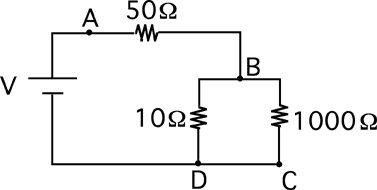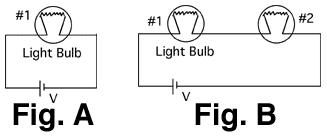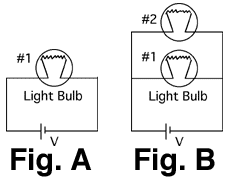Goal: Reason regarding power in a circuit
Source: 283 circuit powers
Consider the circuit below. Which resistor has the greatest power
consumption?

- The 50Ω resistor
- The 10Ω resistor
- The 1000Ω resistor
- The 50Ω and 10Ω resistors
- The 50Ω and 1000Ω resistors
- The 10Ω and 1000Ω resistors
- All have the same power.



Commentary:
Answer
(1) The potential drop over the 10Ω and 1000Ω resistors is the same.
Since power goes as V^2^/R, more power is consumed in the 10Ω resistor
than the 1000Ω resistor. Further, since power also goes as I^2^R and only
a fraction of the current through the 50Ω resistor flows through the 10Ω
resistor, the 50Ω resistor must dissipate the most energy.